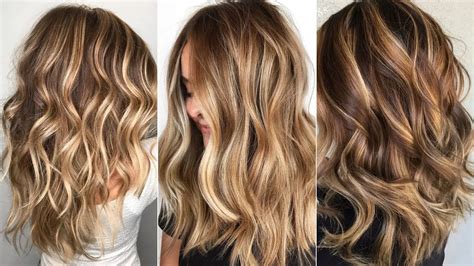Introduction

In the world of hair coloring, two major techniques reign supreme: full highlights and partial highlights. Each method offers distinct advantages and disadvantages, catering to different hair goals and preferences. This comprehensive guide will delve into the intricacies of full highlights vs partial highlights, empowering you to make an informed decision about your next hair transformation.
Full Highlights
Definition:
Full highlights involve bleaching or dyeing small sections of hair throughout the entire head, creating an even distribution of lighter strands.
Benefits:
- Natural-looking dimension: Full highlights mimic the sun-kissed effect, adding natural-looking depth and movement to hair.
- Low maintenance: Since highlights are distributed evenly, they require less frequent touch-ups compared to partial highlights.
- Versatile: Full highlights complement a wide range of hair colors and styles, from blonde to brunette and everything in between.
Disadvantages:
- Time-consuming: Full highlights can take several hours to complete, especially on long or thick hair.
- Potential damage: Bleaching and dyeing can damage hair, especially if not done correctly.
- Costly: Full highlights typically cost more than partial highlights due to the time and materials involved.
Partial Highlights
Definition:
Partial highlights target specific areas of hair, such as the crown, fringe, or a few strands around the face.
Benefits:
- Subtle transformation: Partial highlights add a touch of brightness and contrast without drastically changing the overall hair color.
- Less damaging: Since only a portion of hair is treated, partial highlights minimize the risk of hair damage.
- Affordable: Partial highlights are generally less expensive than full highlights.
Disadvantages:
- Limited impact: Partial highlights do not provide the same level of overall dimension as full highlights.
- High maintenance: Partial highlights require more frequent touch-ups to maintain the desired contrast.
- Less versatility: Partial highlights may not suit all hair colors and styles as effectively as full highlights.
Table 1: Full Highlight vs Partial Highlight Comparison
| Feature | Full Highlights | Partial Highlights |
|---|---|---|
| Treatment area | Entire head | Specific areas |
| Hair distribution | Even | Selective |
| Overall dimension | High | Low |
| Maintenance | Low | High |
| Cost | High | Low |
| Versatility | High | Moderate |
| Damage potential | Moderate | Low |
Additional Considerations
- Hair type and condition: Full highlights may not be suitable for damaged or fine hair. Partial highlights offer a safer option in such cases.
- Desired effect: Consider whether you want a subtle or dramatic transformation. Full highlights provide a more noticeable impact, while partial highlights offer a more understated result.
- Budget: Full highlights are more expensive than partial highlights. Determine your financial constraints before making a decision.
Highlighting Innovations
The hair coloring industry is constantly evolving, introducing innovative techniques that enhance the highlighting experience.
- Foilayage: A hybrid technique that combines foils with freehand painting, creating natural-looking highlights with minimal damage.
- Babylights: Ultra-fine highlights that mimic the natural highlights of children’s hair, adding subtle dimension and youthfulness.
- Root smudging: A technique that blends the roots with the highlights, creating a seamless transition and minimizing the appearance of regrowth.
FAQs
-
How often should I get highlights touched up?
– Full highlights: Every 6-8 weeks
– Partial highlights: Every 4-6 weeks -
Can highlights damage my hair?
– Yes, but the extent of damage depends on the technique used and the condition of your hair. -
Are highlights suitable for all hair colors?
– Yes, but the results may vary depending on the base color. -
Can I get highlights on short hair?
– Yes, partial highlights can effectively brighten short hair. -
Are balayage and highlights the same thing?
– No, balayage is a freehand painting technique that creates softer, more natural-looking highlights. -
How much do highlights cost?
– The cost varies depending on the technique, hair length, and salon.
Conclusion
The choice between full highlights and partial highlights ultimately depends on your individual preferences and hair goals. Full highlights offer a dramatic transformation, while partial highlights provide a more subtle enhancement. By considering the factors discussed in this guide, you can make an informed decision that will elevate your hair to its full potential. Embrace the power of highlights and unleash your inner hair goddess!
